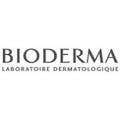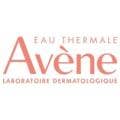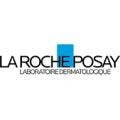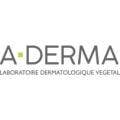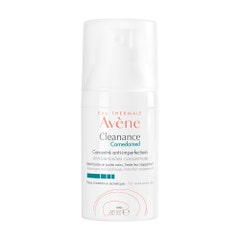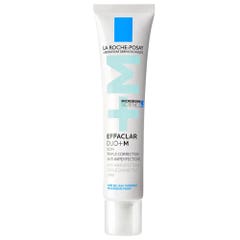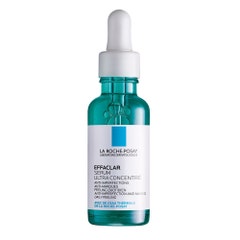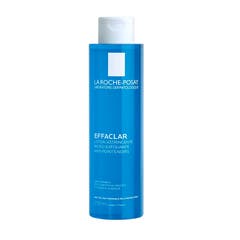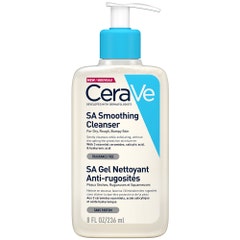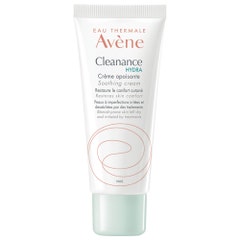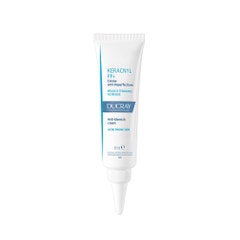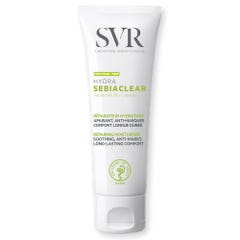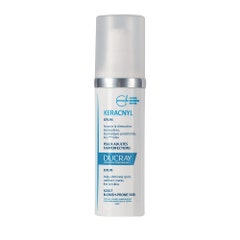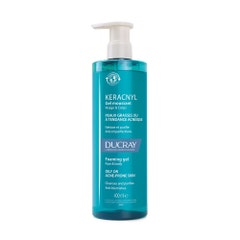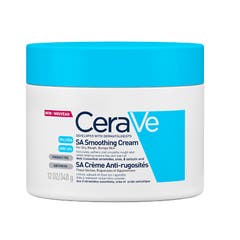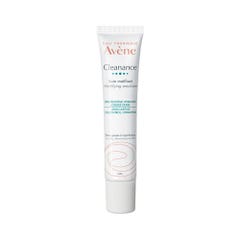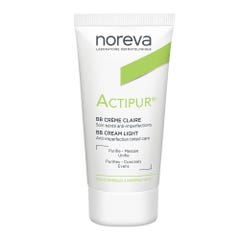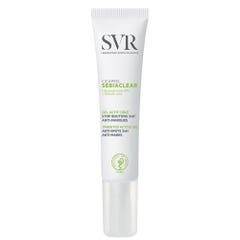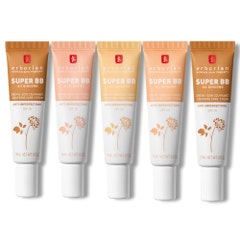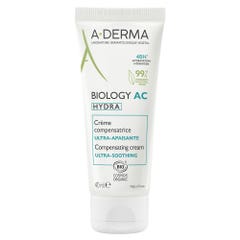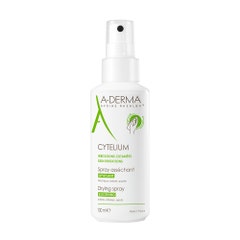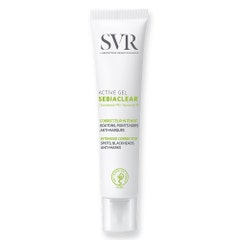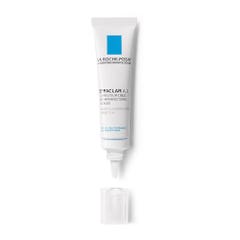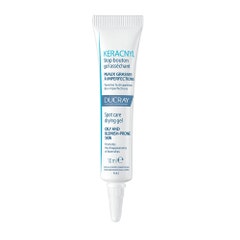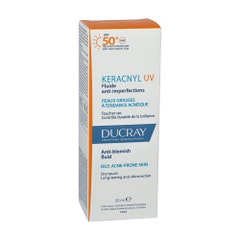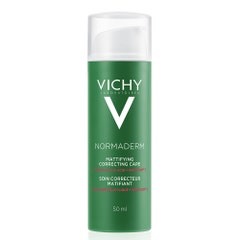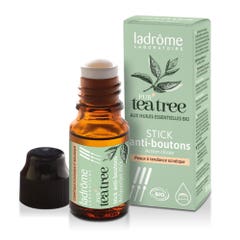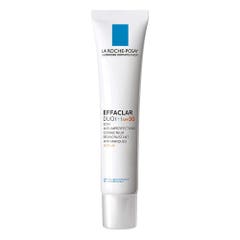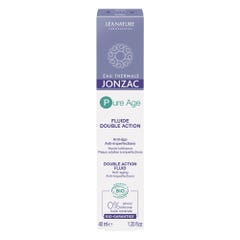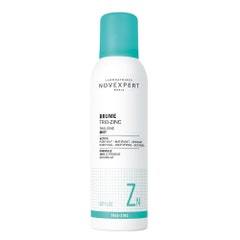Anti-Acne facial treatments
Acne is a skin condition that occurs when your hair follicles become plugged with oil and dead skin cells. It often causes whiteheads, blackheads or pimples, and usually appears on the face, forehead, chest, upper back and shoulders. Acne is most common among teenagers, though it affects people of all ages.
Treatment for acne depends on how severe it is. It can take several months before it improve.
If you just have a few blackheads, whiteheads and spots, you will find on Easyparapharmacie topical treatments and cleansers that do not involve medicine to treat them successfully and at the best price.
Sometimes it is hard for people dealing with acne to understand why even with ungoing treatment, they can’t get rid of their symptoms.
On Easyparapharmacie, you can share your experience with others and read their reviews.
Our consultant will also answer your questions and lead you through with targeted advice.
Once the choice is made, you can order your items on our secure payment platform.
There are cleansers, exfoliators, toners, moisturisers, SFPs, masks, everything for acne routine steps.
And as usual, lots of promotions and good deals.
STEP SKIN CARE ROUTINE FOR ACNE
Your type of skin tends to be genetic and some skins have a tendency to be naturally oilier.
Sebum produced on the face can cause an oily shiny look and certain cosmetics may lead to blocked pores.
A clear complexion starts with a gentle cleansing.
Then, before reaching for products, you can splash your skin with cold water to help close your pores.
Use a hyaluronic acid-based serum.
Smooth on a light moisturiser that nourishes your skin and helps protect it from producing excess sebum.
Apply a gel based SFP.
Opt for a liquid foundation full of fine pigments that will leave you with a full coverage matt finish.
Night time skin preparation is important as it is the time when the cells renew themselves.
Cleansing before bed is essential as during the day the oils on your skin react with dirt and debris.
Use a retinol to encourage cell renewal and layer on a light night cream.
Finally, sort your diet and drink 2 litres of water.
Eating a diet in antioxidants and low in animal products reduce inflammation and sebum production as well as reducing your intake of sugars.
Plus, a more alkaline diet with plenty of greens can help balance hormone levels as well as delivering essential nutrients to the skin.
Due to hormonal shifts, all sorts of changes happen to a female’s skin.
The rise in progesterone hormone stimulates the secretion of sebum.
Thoroughly wash your face twice a day with a cleanser that does not contain oil.
Use an over the counter anti-acne cream to remove excess oil.
Avoid make up containing oil and remove makeup before going to bed.
WAYS TO CARE FOR OILY AND COMBINATION SKINS
Combination skin types experience dullness and dryness on the cheeks, and around the eyes mainly experiencing oiliness in the T zone.
Oily skin generally is oily and greasy all over.
If you suffer from breakouts, you have to take extra caution when dealing with your skincare regimen: cleansing, exfoliating, controlling bacteria and maintaining a healthy skin.
Discover on Easyparapharmacie a wide selection of brands and dedicated products for skin prone to blemishes-and-imperfections.
If you are constantly battling excess shine, enlarged pores and occasional blemishes, you need to mix up your skincare with formulas for oily skin types.
First, refresh and cleanse to remove dirt and impurities, reduce oil and leave skin clean and fresh.
Then, purify pores with an exfoliator. It cleans away toxins and debris and visibly minimize pores.
Balance and soothe with a toner.
Hydrate with a moisturiser for oily skin to help skin stay matte and shine free. Favour lightweight textures.
Protect skin with non comedogenic sunscreen.
Once or twice a week, apply a face mask.
Even if the rest of your skin feels oily, the area around the eye should be treated to hydration as well as the neck and neckline.
A good cleansing routine is not enough.
Without treatment, dark spots and permanent scars can appear on the skin as acne clears.
Rest assured there are many effective treatments available!
And as not just teens have acne, there are many ingredients that are used to treat signs of ageing and acne.
Using a serum is both economical and helpful to absorb sebum, mattify the skin and treat acne breakouts.
Besides, like some oils, they actually boost radiance, moisturise and relive discoloration.
They give your skin light moisture while the vitamins and antioxidants fight damage, like UV and acne-causing bacteria.
Last but not least, if you use a product with a harsh ingredient, serums can also calm the negative effects.
If you have oily skin, you do need moisturise.
Skipping this critical step may leave you plagued with rough, flakey, and red patches. Besides, the skin barrier may become damaged from acne drying products and medications.
Pay great attention to the way of applying. Acne medication should go on first, topped with a moisturiser, then sunscreen and finally makeup.
When shopping your cares, read the label carefully. Oil free and noncomedogenic are the 2 most important words. Pay attention to the ingredients: salicylic acid, vitamin C, clay, tea tree, propolis etc…
Mind the texture: cream, lotion or gel that won’t clog the pores.
Look for SFP as sun exposure is foe to acne and long lasting blemishes may persist, cause scars and pigmented spots.
HOW TO GET HEALTHY GLOWING SKIN
Masks and exfoliators are extra steps to your routine.
Typically, oily skin has larger pores and you’ll be more prone to blackheads, whiteheads and pimples and you’ll know all about the midday shine.
For oily skin, our experts recommend doing at least 2 masks a week-one soothing and one detoxifying mask. More specifically a detoxifying clay mask, as clay has antiseptic and astringent properties which will help to remove oil from your pores and fight acne inducing bacteria.
Even if exfoliation is an essential step, our consultant insists that you should avoid harsh scrubs and over drying scrubs.
Instead, opt for a chemical exfoliator which is an enzyme or acid-based formula that penetrate deep into the skin dissolving dead skin.
It is also anti-inflammatory and antibacterial.
Resurfacing masks and scrubs help smooth and brighten the skin and can be used 2 or 3 times a week.
Stubborn skin breakouts and dry spots can take a toll on your daily beauty routine, making it a challenge to find makeup products that provide good coverage without causing irritation. If you would like to achieve the “no-makeup look” and keep pesky blemishes at bay, you might want to consider using makeup that’s safe for oily and acne-prone skin.
Makeup sits on the surface of the skin for hours at a time, and the correct formulation is crucial to preventing excessive occlusion of the skin’s surface. Some makeup products include acne-fighting ingredient, such as antimicrobial peptides, vitamin A derivatives, and rosewater, that can relieve the primary factors associated with acne: bacteria, congestion, and inflammation.
Finally, don’t miss out on dietary supplements as they may benefit people with acne: vitamin D, burdock, zinc, fish oil, vitex, barberry, CBD, primrose, etc…
Eat mostly whole nutrient dense food, avoid highly refined products and take dietary supplements.
Controlling blood sugar, limiting or cutting out dairy and whey protein, and following a whole-food-based, nutrient-dense diet are some of the best ways to treat your acne naturally.
Give products about 10 to 12 weeks, or about 3 months. After this amount of time, you should see some improvement. If you've been treating your acne consistently and your breakouts aren't getting better, or if your acne seems to be worsening, you should contact a dermatologist.
Your dermatologist may prescribe one or more of these: Antibiotics (helps to kill bacteria and reduce inflammation). Birth control pills and other medicine that works on hormones (can be helpful for women). Isotretinoin (the only treatment that works on all that causes acne).
